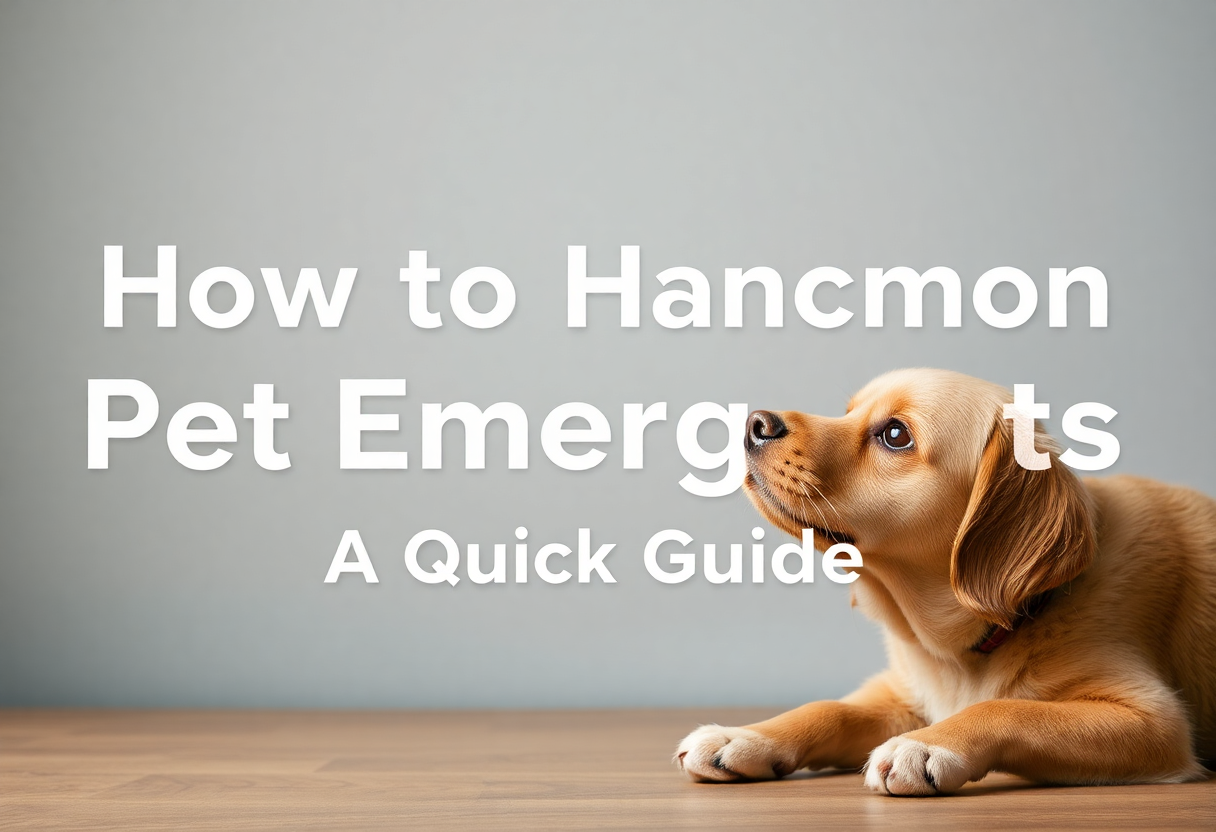How to Handle Common Pet Emergencies: A Quick Guide
Pets bring joy and companionship into our lives, but as pet parents, we must also be prepared for emergencies that can arise. Whether it's a sudden illness or an unexpected injury, knowing how to respond can make all the difference. This guide will cover common pet emergencies and how to effectively handle them.

1. Choking
If your pet is choking, it is crucial to act quickly. First, try to stay calm and assess the situation. Look for signs of choking such as pawing at the mouth, coughing, or gagging. If the object is visible, you may attempt to remove it carefully. For larger dogs, you can perform the Heimlich maneuver. For smaller dogs and cats, hold them belly up and thrust gently under their rib cage.
2. Poisoning
In case of suspected poisoning, identify the substance your pet may have ingested. Common household items like chocolate, certain plants, and human medications can be toxic. Contact your veterinarian or an emergency pet poison hotline immediately. Do not induce vomiting unless instructed to do so.
3. Cuts and Wounds
For cuts and wounds, the first step is to stop any bleeding. Apply gentle pressure with a clean cloth. Once bleeding has stopped, clean the wound with mild soap and water and cover it with a sterile bandage. Monitor for signs of infection, such as redness or swelling.
4. Heatstroke
Heatstroke is a serious condition that can occur if pets are exposed to high temperatures for too long. Symptoms include excessive panting, drooling, and lethargy. Move your pet to a cooler area, and provide water. Apply wet cloths to their body and seek veterinary assistance immediately.
5. Seizures
If your pet has a seizure, ensure they are in a safe space where they cannot injure themselves. Time the seizure and avoid placing anything in their mouth. Once it is over, keep them calm and comfortable, and contact your veterinarian for advice.
6. Broken Bones
Signs of a broken bone may include limping, swelling, or an inability to use a limb. If you suspect a fracture, keep your pet still and get them to a veterinarian as soon as possible. Do not attempt to realign the bone yourself.
7. Allergic Reactions
Allergic reactions can manifest as swelling, hives, or difficulty breathing. If you notice these symptoms, take your pet to a vet as quickly as possible. They may require a shot of epinephrine or other treatments to manage the reaction.
8. Insect Bites and Stings
Insect bites can cause localized swelling and discomfort. Monitor your pet for signs of a severe reaction, such as difficulty breathing or excessive swelling. If symptoms worsen, consult your vet.
Conclusion
Being prepared for pet emergencies can significantly improve outcomes for our furry friends. Always keep a pet first-aid kit handy and familiarize yourself with emergency procedures. Remember, staying calm and knowing when to seek professional help is key.